| Amount Per 1 serving | |||
| Calories | 80 Kcal (335 kJ) | ||
| Calories from fat | 63 Kcal | ||
| % Daily Value* | |||
| Total Fat | 7g | 11% | |
|---|---|---|---|
| Saturated Fat | 2g | 10% | |
| Cholesterol | 15mg | 5% | |
| Sodium | 420mg | 18% | |
| Total Carbs | 2g | 1% | |
| Sugars | 1g | 4% | |
| Protein | 3g | 6% | |
| Iron | 0.3mg | 2% | |
* Percent Daily Values are based on a 2000 calorie diet. Your daily values may be higher or lower depending on your calorie needs.
Find out how many calories should you eat.
Ingredients And Nutrition Overview
Best
choice Good
choice Poor
choice Avoid
it!
choice Good
choice Poor
choice Avoid
it!
-
WeightWatchers Points: 2.2, PointsPlus: 2, SmartPoints: 3
WeightWatchers Points are estimated by carbohydrates, fats, protein and fiber in product. They are not an affirmation of better quality or nutritional value of the product or its manufacturer. Only way to count for dieters. Less points are better.
Read more at Weight watchers diet review -
Contains nitrites/nitrates
This product contains one or more of the following: - Sodium nitrite - Sodium nitrate - celery powder Sodium nitrite and its closely related sodium nitrate are food preservatives used primarily in prepared meat and fish such as ham, bacon, hot dogs, corned beef (spam), luncheon meats, and smoked fish. They help the meat look nice and red instead of grayish. Unfortunately, when cooked or broken down in the stomach, nitrites form nitrosamines (also called N-Nitroso Compound), which can cause cancer in young children and pregnant women. Sources: ----------- S C Larsson, A Wolk - Red and processed meat consumption and risk of pancreatic cancer: meta-analysis of prospective studies Br J Cancer. 2012; 106(3): 603–607. Risch HA, Jain M, Choi NW, Fodor JG, Pfeiffer CJ, Howe GR, Harrison LW, Craib KJ, Miller AB. - Dietary factors and the incidence of cancer of the stomach. Am J Epidemiol. 1985;122(6):947-59. Ji BT, Chow WH, Gridley G, Mclaughlin JK, Dai Q, Wacholder S, Hatch MC, Gao YT, Fraumeni JF Jr. - Dietary factors and the risk of pancreatic cancer: a case-control study in Shanghai China. Cancer Epidemiol Biomarkers Prev. 1995;4(8):885-93. Nöthlings U, Wilkens LR, Murphy SP, Hankin JH, Henderson BE, Kolonel LN. - Meat and fat intake as risk factors for pancreatic cancer: the multiethnic cohort study. J Natl Cancer Inst. 2005;97(19):1458-65. Aschebrook-Kilfoy B, Cross AJ, Stolzenberg-Solomon RZ, Schatzkin A, Hollenbeck AR, Sinha R, Ward MH. - Pancreatic cancer and exposure to dietary nitrate and nitrite in the NIH-AARP Diet and Health Study. Am J Epidemiol. 2011;174(3):305-15. Preston-Martin S, Pogoda JM, Mueller BA, Holly EA, Lijinsky W, Davis RL. - Maternal consumption of cured meats and vitamins in relation to pediatric brain tumors. Cancer Epidemiol Biomarkers Prev. 1996;5(8):599-605. Knekt P, Järvinen R, Dich J, Hakulinen T. Knekt P, Jarvinen R, Dich J, Hakulinen T. - Risk of colorectal and other gastro-intestinal cancers after exposure to nitrate, nitrite and N-nitroso compounds: a follow-up study. Int J Cancer. 1999;80:852–856. Zhu Y, Wang PP, Zhao J, Green R, Sun Z, Roebothan B, Squires J, Buehler S, Dicks E, Zhao J, Cotterchio M, Campbell PT, Jain M, Parfrey PS, Mclaughlin JR. - Dietary N-nitroso compounds and risk of colorectal cancer: a case-control study in Newfoundland and Labrador and Ontario, Canada. Br J Nutr. 2014;111(6):1109-17.
-
For dieters: FoodPoints value is 3
* FoodPoints are calculated by Fooducate based on fats, carbs, fiber, and protein. They are not an endorsement or approval of the product or its manufacturer. The fewer points - the better.
-
Highly Processed!
This product is highly processed. If you'll take a look at its ingredient list, you'll discover new words to add to your vocabulary. Many of theses ingredients are required to increase the shelf life of the product and improve the flavor that disappears when food is not fresh.
-
Lunch meats, why the bad rep?
Lunch/deli meats come in different levels of quality. Some are more processed than others. Some have more fat than others. Some are better cuts of meat than others. And some contain nitrites, which you really gotta watch out for. The commonality between all lunch meats is the large amount of salt they contain. As a simple example, 3 oz of sliced turkey contains 1000 mg of sodium!! That’s almost half the recommended daily intake! Even our top rated product in this category still does not meet the recommended amount of sodium a product should contain (less than 120mg per 3 oz). Our advice? If you really can’t live without your turkey on rye sandwich, try to have these meats in small amounts and and stick to the lower fat, less processed versions.
-
Will sodium erythorbate keep you safe?
Sodium erythorbate is an additive chemically similar to ascorbic acid (Vitamin C). It is used in processed meats to prevent nitrosamines (cancerous agents that develop from nitrate preserved food) from forming. Any food preserved with nitrates is liable to develop nitrosamines, either from frying or during digestion. Sodium erythorbate is used interchangeably with ascorbic acid to prevent the formation of these cancer-causing chemicals.
-
Learn about corn syrup, found here
Corn syrup is often used as a sweetener in processed food. It is NOT THE SAME as high fructose corn syrup. Don't be fooled when looking up the amount of sugar a product contains if corn syrup is listed as an ingredient. This is because corn syrup contains 50% sugar, and 50% of another form of carbohydrate known as ""oligosaccharides"", which is pretty close to sugar. If a product has less sugar than you think it should, but contains corn syrup in the ingredient list, you'll know that the missing carbs are those oligosaccharides, not much better.
-
Natural flavors added. Learn why
Companies add flavorings to make products taste better. They are created in a lab and the formulations are guarded as trade secrets. Flavorings can compensate for flavor loss during processing, substitute for ingredients, lower production costs and increase shelf stability. Natural flavorings are more expensive to source than artificial flavors, but tend to be better received by consumers. People sensitive to MSG, vegans, vegetarians and those with allergies should pay special attention to the phrase "natural flavorings" since glutamates, animal products or allergens may be the source of natural flavors. You can always contact the manufacturer for more information.
-
Learn about mechanically separated meat
Mechanically separated meat is manufactured by passing bones leftover after the initial cutting through a high pressure sieve. The resulting paste goes on to become the main ingredient in many a hot dog, bologna, chicken nuggets, pepperoni, salami, and jerky. The industry calls this method AMR – Advanced Meat Recovery.
You Might Also Like
% RDI of Main Nutrition Facts
4%
of RDI* (80 calories) 28 g
-
Cal: 4 %
-
Fat: 10.8 %
-
Carb: 0.7 %
-
Prot: 6 %
-
0%25%75%RDI norm*
Calories Breakdown
- Carbs (9.6%)
- Fat (75.9%)
- Protein (14.5%)
Get Your Recipe of Health!
Follow RecipeOfHealth on Facebook!


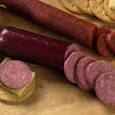
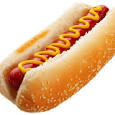
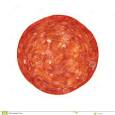
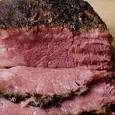
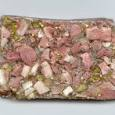
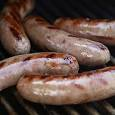
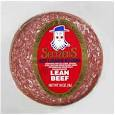
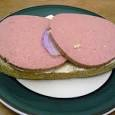
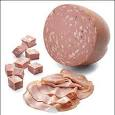
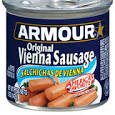
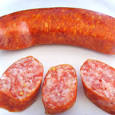
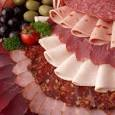
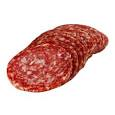
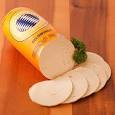
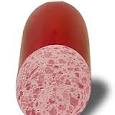
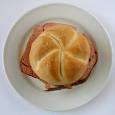
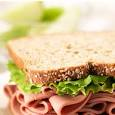
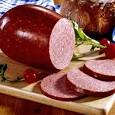









Add your comment